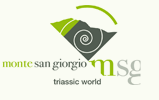Viggiù (I)
Viggiù is a pleasant town in the north-east of the province of Varese, more precisely in Valceresio at the foot of Monte Orsa. Its story begins from far away: Roman findings are the evidence.
The famous "Stone of Viggiù” was extracted from its hills, a building and decoration material employed by Picasass (stonecutters) and families of artists such as: the Argenti, the Bottinelli, the Butti, the Buzzi Leone, the Galli, the Longhi and the Piatti Family and thanks to the circulation of their works all over the world Viggiù became famous as the Land of Artists.
There are many treasures in Viggiù, among which the old town: one of a kind characterized by the typical courtyard houses where you would have found the laboratories of the stonemasons with entrances adorned by artistic stone portals.
Upon entering the town the Museum Enrico Butti collects the works of the illustrious sculptor of Viggiù, one of the leading figures of Italian sculpture at the turn of the 19th century. Situated on a hill in a beautiful park there is the gallery of plaster casts that was wanted by Butti himself. In the same context we find the home-studio of the sculptor, and the Museum of the twentieth century Artists from Viggiù.
In the heart of the village Villa Borromeo,an elegant building from the late neoclassical period, inserted in a lovely green setting, which makes it ideal for daily excursions. In the garden are located the stable that now houses the Museum of Picasass (stonecutters) and the Orangery, which is used to house the Museum of the nineteenth century Artists of Viggiù .
The Picasass museum is an ethno-anthropological collection dedicated to the history of stone processing in Viggiù. It is one of the few examples in Lombardy of the activity of simple artisans and artists active in the most important sites in Italy and in the world from the fourteenth century to the middle of the last century. It is layed out with tools and materials used by stonecutters, locally known as "Picasass", in the stable of Villa Borromeo, a circular two floor building, with a tower, adorned with friezes and elegant terracotta horse heads.
Along the streets of the town, you can visit the Parish Church of Santo Stefano with its imposing bell tower by Martino Longhi the Elder, and decorated with the works of Louis Bottinelli, Guido Butti, Elijah Vincent Buzzi and others, the Church of the Rosary enhanced by the paintings by the town painter Carlo Maria Giudici, the Church of Santa Maria Nascente known locally as the Church della Madonnina that was built in 1718 and that of Our Lady of the Cross with the façade in clear Bramante style in which an elegant altar exhibits the splendor of the art of the artists of Viggiù whom were specialized in the construction of altars in polychrome marbles.
Placed on the hill south of the town, you can visit the Church of San Martino with its elegant portal and simple structure, while at the top of the hill on the north side, there is the Church dedicated to St. Elias with the interior completely decorated with frescoes.
Among the excursions you can climb up the Colle Sant'Elia and the massif of Monte Orsa-Pravello, walking among the intact trenches of the Cadorna Line (military fortifications dating from the period of the First World War). From the top of the mountains, in a beautiful landscape, you can see the entire Po valley, the imposing chain of the Alps, Lake Lugano and the numerous lakes of Lombardy.
In the hamlet of Baraggia you can visit the Church of San Giuseppe, with paintings by Antonio Piatti and the Church of San Siro where in the chorus you can admire frescoes of the sixteenth century.
Festivals and events.
Among the most characteristic manifestations there is the Palio dei Rioni that takes place in the month of June. The Palio has been going on for several decades and continues to be an integral part of the tradition of Viggiù. The celebration of the Patronal Feast of Santo Stefano, with stalls in the streets of the historic center and fireworks in the frame of the Valceresio,is generally held on the second Sunday of the month of July, although the timing to consider would be that of August the 3rd. It is the day in which we clelebrate the discovery of the bones of Santo Stefano Protomartyr which is normally celebrated on December the 26th. In Baraggia on the 17th of January, there is the traditional Patronal Feast of St. Anthony the Abbot. On that day there are stalls along Via Indipendenza and you can taste the traditional blessed bread of Sant’Antonio. Another feature is its traditional bonfire.




